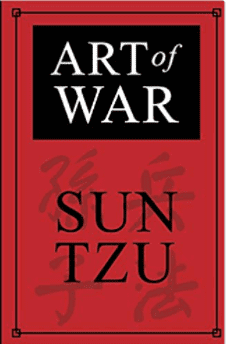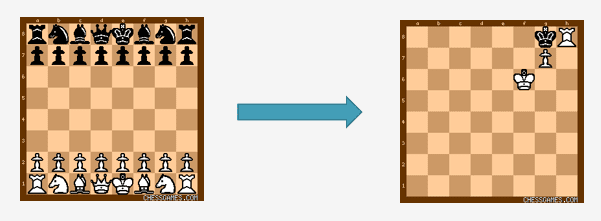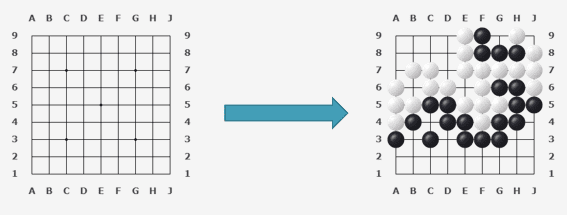In business, we are always seeking guidance and direction. The complex nature of business leads us to look for frameworks and philosophies that will inform our decision-making.
Sun Tzu's teachings provide a framework for strategic decision-making, emphasizing the importance of understanding one’s strengths and weaknesses and those of the competition.
During our classes, webinars, and presentations, we are often asked, “How did you apply the art of war in your business?”
We’ll discuss this topic and how you can succeed by applying these principles in your business.
The Origins of Military Strategy
Modern business strategy has its origins in military strategy. Sun Tzu's Art of War has significantly influenced modern business strategy, emphasizing careful planning, understanding competition, and thorough preparation.
Understanding the business environment is crucial for identifying opportunities and navigating the competitive landscape. The essence of business is to prevail over your competition to win market share and increase profit. Most business transactions are a zero-sum game where one participant wins while the other loses.
Let’s imagine you sell toasters. Very few customers want or need two toasters, so once the sale is made, one seller wins, and everyone else loses.
Carl von Clausewitz was a Prussian general and military theorist. His most famous book, On War, focused on conflict's psychological and political aspects rather than traditional military strategy.
"War is a clash between major interests....Rather than comparing it to art we could more accurately compare it to commerce, which is also a conflict of human interests and activities."
Sun Tzu & The Art of War
Sun Tzu was a Chinese general, strategist, philosopher, and author. He lived around 400 B.C. during a period known as The Age of the Warring States. People often ask, “Did Sun Tzu write Sun Tzu’s The Art of War?” It is impossible to say for certain, but most historians believe him to be the original author.
His The Art of War has become a classic of military strategy. It is one of the best-selling strategy-related books of all time, and MBA students worldwide study it.
Sun Tzu's The Art of War provides valuable insights for entrepreneurs facing contemporary challenges. It guides business leaders to develop effective tactics, adapt to competition, and manage resources.
Unfortunately, the combination of arcane language and the challenge of translating military concepts into mercantile concepts makes the Art of War difficult to understand.
What is the best translation of the Art of War?
The translation by Lionel Giles Sun Tzu on the Art of War (London: Luzac & Co., 1910).
The Art of War is readily available on Amazon, or you can get a Sun Tzu Art of War pdf here. Finally, if you are looking for the Art of War summary, you can get it here.

Winning Without Fighting
One of Sun Tzu’s primary principles is to win without fighting. While this may seem counter-intuitive, an in-depth look at the concept reveals some elegant insights. In business, your competitors are not the enemy; understanding their strengths and weaknesses can help you develop strategies to outmaneuver them without direct confrontation.
"Battles are dangerous affairs."
"He who struggles for victory with naked blades is not a good general."
One of Sun Tzu’s primary principles is to win without fighting. While this may seem counter-intuitive, an in-depth look at the concept reveals some elegant insights. In business, your competitors are not the enemy; understanding their strengths and weaknesses can help you develop strategies to outmaneuver them without confrontation.
“Battles are dangerous affairs.” “He who struggles for victory with naked blades is not a good general.”
Sun Tzu is not saying that you should not engage in conflict; you should not engage in battles that will result in heavy losses or destruction of the terrain.
What’s the point of winning a battle where your army is decimated and the buildings, crops, and land are destroyed or severely damaged? Winning a fight like this is a Pyrrhic victory (a victory that comes at a significant cost, perhaps making the ordeal to win not worth it).
The game of chess illustrates an excellent example. In chess, the object is to “take” the opponent’s king. “Checkmate” comes from the Persian shah mat, meaning “the king is dead.”

At the beginning of a chess game, both sides have a full complement of pieces, each with representative abilities, strengths, and weaknesses. Over the course of a game, each side loses pieces until one side can “take” the other’s king.
Truly a Pyrrhic victory, the board is littered with dead pieces, and one king has been captured.
Contrast this with the ancient Chinese game of Go. In a game of Go, each side works to capture terrain with his pieces. At the end of the game, the board is full of pieces, with the winner holding more terrain than the loser.
While capturing an opponent’s pieces in Go by surrounding them is possible, this is a secondary objective to capturing and holding terrain.

The comparison between these games is an excellent illustration of the idea that there are different ways to win, and the superior way is usually to do so without direct conflict, which results in losses of resources to win - a Pyrrhic victory.
Business Strategy and Military Strategy
Business strategy and military strategy share many similarities. Both require meticulous planning, precise execution, and adapting to changing circumstances. Sun Tzu’s “The Art of War” is a timeless classic that has transcended its military origins to become a cornerstone in business strategy.
By understanding and applying the principles of military strategy, business leaders can develop effective strategies to outmaneuver their competitors and achieve success.
In both fields, the goal is to gain a competitive advantage. Just as a general must understand the battlefield, a business leader must understand the business environment.
This involves recognizing opportunities, anticipating threats, and making informed decisions to navigate the competitive landscape. Sun Tzu’s insights provide a strategic edge, helping business leaders think several steps ahead and craft innovative and effective strategies.
Key Principles of The Art of War
Sun Tzu’s “The Art of War” is built on several key principles that can be directly applied to business strategy. These principles include:
- Know yourself and know your enemy: Understanding your strengths and weaknesses and those of your competitors is crucial. This knowledge allows you to leverage your strengths and exploit competitors’ weaknesses.
- Choose the right battlefield: Select the market or industry where you can compete most effectively. This involves identifying niches where your business can excel and avoiding areas where you are disadvantaged.
- Use alliances and diplomacy: Form strategic partnerships to gain a competitive advantage. Collaborating with other businesses can provide access to new resources, markets, and technologies.
- Adapt to changing circumstances: Be flexible and responsive to changes in the market or industry. The ability to pivot and adjust your strategy in response to new information or shifts in the market is essential for long-term success.
- Use deception and misdirection: Employ marketing and advertising to create a false impression of your company’s strengths and weaknesses. This can mislead competitors and give you a strategic advantage.
By incorporating these principles into your business strategy, you can navigate the competitive landscape more effectively and achieve a sustainable competitive advantage.
Building a Strong Business Foundation
Building a strong business foundation is essential for achieving long-term success. This involves developing a solid business plan, establishing a strong management team, and creating a positive company culture. Sun Tzu’s principles can be applied to this process in several ways:
- Conducting market research: Understanding the competitive landscape is the first step in building a strong foundation. Market research helps you identify opportunities and threats, allowing you to make informed decisions.
- Developing a strategic plan: A well-thought-out plan is crucial for achieving business objectives. Sun Tzu’s emphasis on planning and preparation can guide you in creating a roadmap for success.
- Building a strong management team: A diverse team with various skills and expertise is vital. Sun Tzu’s principle of leveraging strengths can be applied to assembling a team that complements each other’s abilities.
- Creating a positive company culture: Fostering a culture of innovation and teamwork can drive your business forward. Sun Tzu’s focus on morale and unity can help you build a cohesive and motivated team.
Applying these principles can lay a strong foundation for your business, setting the stage for future growth and success.
Effective Decision-Making
Effective decision-making is critical for business success. Sun Tzu’s principles can be applied to enhance decision-making processes in several ways:
- Gathering intelligence: Collecting data and information is essential for informed decision-making. Sun Tzu emphasized the importance of knowing the terrain and the enemy, which translates to understanding the market and your competitors in business.
- Analyzing options: Evaluating different courses of action and their potential outcomes is crucial. Sun Tzu’s strategic thinking encourages thoroughly analyzing all possible scenarios before deciding.
- Choosing the right strategy: It is key to select the best option based on analysis. Sun Tzu’s principle of choosing battles wisely can guide you in selecting strategies that maximize your strengths and minimize your weaknesses.
- Adapting to changing circumstances: It is vital to be flexible and responsive to changes in the market or industry. Sun Tzu’s emphasis on adaptability ensures you can pivot and adjust your strategy as needed.
By incorporating these principles into your decision-making process, you can make more informed and effective choices, leading to better business outcomes.
The Art of War Applied to Business
As you plan your business strategies, seek to control most of the market (market share - or terrain in Sun Tzu’s lingo). You should seek to control this market share with the smallest possible investment of resources. Don’t attempt winning by destroying your competitor through endless fighting.
An excellent application is to use Sun Tzu's Art of War for business management strategic planning. The principles outlined in the book are highly applicable to competitive business situations.
Gaining a competitive edge requires strategic actions and leveraging market intelligence. These principles can help you develop more effective strategies in competitive business situations.
Using a business wargame to role-play various scenarios and outcomes can be a powerful way to use these principles in planning your strategy.
Deception, subtlety, and other less apparent tactics may be necessary to win without fighting. Asymmetric concepts like the effective use of agility (a strength of many small businesses) or competitive intelligence can also be effective winning methods.
Being agile, slippery, unconventional, and employing unexpected actions can all be tools to win without fighting.
Is the Art of War still relevant? The sheer number of MBA students and military officers reading the book after thousands of years of history should answer that question with a resounding yes!
Blue Ocean Strategy for Competitive Advantage
Blue Ocean Strategy is a 2004 book written by W. Chan Kim and Renee Mauborgne, professors at INSEAD. The book's name is synonymous with the name of the marketing theory.
Blue Ocean Strategy simultaneously pursues differentiation and low cost to create new market space and demand.
It is about creating and capturing uncontested market space, making the competition irrelevant. Implementing the Blue Ocean Strategy requires unique business skills, including strategic thinking and innovative planning.

This strategy concept is an approach to winning without fighting. Opening up a new market space and creating new demand are ways of growing revenue without directly engaging with your competition.
Business Growth and Development
Business growth and development are critical for achieving long-term success. Sun Tzu’s principles can be applied to drive growth and development in several ways:
- Identifying new markets and opportunities: Market research is essential for identifying new areas for growth. Sun Tzu’s principle of knowing the terrain can guide you in exploring new markets and opportunities.
- Developing new products and services: It is crucial to create innovative products and services to meet changing customer needs. Sun Tzu’s focus on adaptability can inspire you to innovate and evolve continuously.
- Building strategic partnerships: Forming alliances with other companies can provide a competitive advantage. Sun Tzu’s emphasis on alliances and diplomacy can help you build mutually beneficial relationships.
- Expanding into new markets: It is vital to use market research to identify new areas for expansion. Sun Tzu’s principle of choosing the right battlefield can guide you in selecting markets where your business can thrive.
Applying these principles can drive business growth and development, ensuring long-term success and sustainability.
In conclusion, Sun Tzu’s “The Art of War” offers timeless wisdom that can be applied to modern business strategy. By understanding and implementing these principles, business leaders can navigate the competitive landscape more effectively, achieve a competitive advantage, and drive long-term success.
How Can The Art of War be Applied to Life?
This is a big question that we can't fully address in this article, which focuses on the Art of War as a business guide.
But the Art of War is clearly a handbook on how to manage conflict, focus on strengths, and protect weaknesses. These are all good concepts for day-to-day life.
A careful reading of the Art of War will deliver many interesting insights into managing one's daily life and the interactions with family, friends, acquaintances, and enemies.
Final Thoughts
The principles and concepts of military strategy, ancient ideas, and more modern interpretations can be very effective tools to design a business model that will win. Sun Tzu's The Art of War provides timeless principles that can guide business leaders in developing effective tactics, adapting to competition, and managing resources.
A business leader must use strategic frameworks to design a business model that will win. How war affects business is not the book's point, but the principles espoused in The Art of War can be applied to any situation where competition or conflict is present.
Business leaders must understand the competition and adapt to changes to gain a competitive advantage.
Business competition is often asymmetric. Large companies with lots of resources compete with much smaller companies. Business is unfair. The only way for a smaller company to win is through using asymmetric strategies and tactics that use their strengths to exploit their adversaries' weaknesses.
The role of a business owner is to use asymmetric strategies to exploit their adversaries' weaknesses. Small business leaders must be smarter and stealthier to win battles with limited resources.
Finally, business wargames and other competitive strategy development methodologies can help a company generate powerful ideas for winning without fighting. Be sure to fully utilize your CRM and other tools to keep track of your progress.

FAQ Section - The Art of War in Business:
How can I apply Sun Tzu's "Art of War" principles to my small business?
Start by focusing on strategy over tactics. Assess your competition, understand your market, and use intelligence to anticipate moves. For example, "winning without fighting" can mean identifying gaps in your competitors' service and exploiting them with superior customer experiences rather than price wars.
Can the "Art of War" be applied to industries outside traditional business?
Adaptability, resource allocation, and strategic planning apply to any industry. Whether in technology, retail, or services, aligning your strategy with these time-tested lessons can help you stay agile and competitive.
What specific "Art of War" tactics can I use in marketing?
Sun Tzu emphasizes the element of surprise and understanding the battlefield. In marketing, this could mean launching campaigns in underserved markets or introducing innovative products that meet emerging customer needs. Knowing your competition’s weaknesses and focusing your strengths on those areas is key.
How does the concept of 'knowing your enemy' translate in business?
In business, 'knowing your enemy' means thoroughly researching your competitors, industry trends, and customer behavior. Use this information to identify opportunities for your business to outmaneuver competitors, such as niche targeting or offering a unique value proposition.
How can The Art of War help small businesses compete against larger companies?
The Art of War emphasizes the importance of strategy, agility, and knowing your strengths and weaknesses. Small businesses can use these principles to outmaneuver larger competitors by being more adaptable, finding niche markets, and leveraging personal relationships with customers. While larger companies may have more resources, small businesses often have the advantage of being nimble and can implement changes more quickly. Small companies can stay competitive by focusing on strategic advantages rather than resources.
What is the most essential principle from The Art of War for business leaders?
One of the most vital principles is "Know yourself and know your enemy." This translates to understanding your company’s strengths and weaknesses and the competition’s. By thoroughly analyzing both, you can develop strategies that exploit your competitors' weaknesses while reinforcing your strengths. This knowledge helps leaders make informed decisions that position their business for success, even in highly competitive environments.
How can The Art of War be applied to team leadership and internal operations?
The Art of War stresses the importance of strong leadership, clear communication, and aligning the team toward a common goal. Business leaders can apply these principles by ensuring their teams understand the overall strategy and each individual’s role. Influential leaders foster a sense of unity and purpose, motivate their teams, and lead by example. In the context of internal operations, businesses can use the concept of "discipline and order" to ensure processes run smoothly and efficiently, which is crucial to long-term success.
What is a Pyrrhic victory, and how does it apply to business?
A Pyrrhic victory is a win that comes at such a significant cost that it is almost equivalent to defeat. In business, this could mean achieving a short-term goal, like outpricing a competitor or winning a big contract, but at the expense of long-term sustainability—such as draining resources, damaging customer relationships, or burning out your team. While it may feel like a win in the moment, a Pyrrhic victory can weaken your business in the long run. The Art of War teaches that true victory is where you conserve resources and avoid unnecessary losses, ensuring long-term success rather than just a fleeting win.

Ready to leverage the strategic wisdom of The Art of War in your business?
Let us help you turn these ancient principles into modern success.
Take Action Now:
- Explore more insights: Read articles on competitive strategy and business growth here.
- Do you need personalized strategy advice? Contact us for a complimentary consultation to discuss how these strategies can work for your business.
- Want expert guidance on your next move? Schedule a one-on-one session with our team today. Book Now.
Don't miss the chance to transform your business using battle-tested strategies for success!
About the author
Mark A. Hope is the co-founder and Partner at Asymmetric Marketing, an innovative agency dedicated to creating high-performance sales and marketing systems, campaigns, processes, and strategies tailored for small businesses. With extensive experience spanning various industries, Asymmetric Marketing excels in delivering customized solutions that drive growth and success. If you’re looking to implement the strategies discussed in this article or need expert guidance on enhancing your marketing efforts, Mark is here to help. Contact him at 608-410-4450 or via email at mark.hope@asymmetric.pro.

